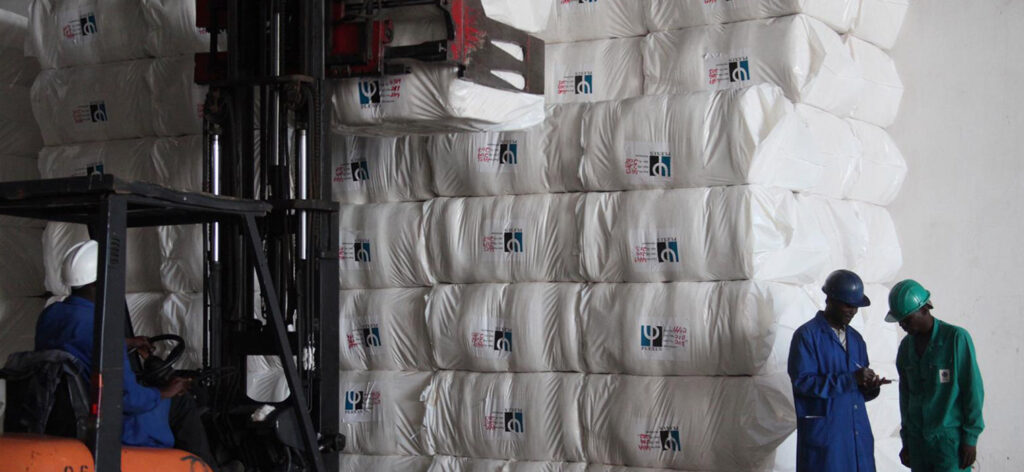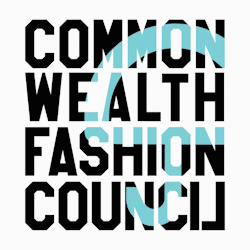Commonwealth Fashion
to the Rescue
By Alanna Fairey
Commonwealth Fashion Content Editor
When Daniel Hatton founded the Commonwealth Fashion Council (CFC), he wanted to bridge the gap that existed within the Commonwealth Fashion Industries and address the dated notions of what The Commonwealth represents and aspires to be.
And rather than look to the past, Hatton wants the CFC to always look to the future.
“Commonwealth Fashion is a window of how to view fashion within The Commonwealth and global fashion sector,” Hatton says. “I think of the future of Commonwealth Fashion and how this can play a pivotal role for the wider global fashion sector and how the Commonwealth Fashion Council will champion the core values and principles of the Commonwealth”.
What makes the Commonwealth Fashion Council unique, according to Hatton, is its ability to unite industries to governments, as The Commonwealth is a collection of 54 nations (governments).
“The global fashion sector doesn’t have an intergovernmental organisation for global fashion development,” Hatton stresses. “The CFC can be that body due to The Commonwealth’s unique structure.”
The Commonwealth Fashion Council (CFC) is a not-for-profit Commonwealth-organisation occupying a unique space for inclusive global fashion development (Commonwealth Fashion). The CFC links together the 54 fashion industries of the Commonwealth and aims to promote fashion education, youth and gender empowerment and responsibility through its programs and activities. The CFC is also involved in major infrastructure projects such as developing the Commonwealth Fashion District in Kuala Lumpur, Malaysia, and developing the Commonwealth Fashion App to centralise all Commonwealth Fashion data, events, and news.
Under the umbrella of CFC’s “planet people hope” message, Hatton has seen that the CFC’s core values are resonating with brands and consumers.
“These are aspirations and values such as transparency, accountability and the recognition of small state which I interpret as the recognition of small industries and keeping them involved in the conversation,” Hatton explains. “[CFC’s] other values are democracy and freedom of Expression, which are fundamental within today’s global fashion sector and vital for Commonwealth Fashion.”
The interest in fashion and the Commonwealth is timely. Ahead of the G7 summit in June 2021, pioneering fashion designer Stella McCartney represented the fashion industry alongside HRH The Prince of Wales to announce the Terra Carta, a movement that puts nature, people and the planet at the forefront of global and business leaders’ minds.
With awareness increasing, Hatton can see the Commonwealth Fashion Council’s potential and impact encouraging a more connected, energised and responsible fashion sector.
“It’s vital that governments step up to resolve issues, and fashion has a role to play with falling in the top five most polluting industries on the planet. It’s important for Commonwealth Fashion to champion this type of interaction [between governments and industries],” Hatton says. “Can you imagine if 54 nations agreed on implementing action across the Commonwealth fashion landscape, the results and impact will be felt across the globe and with that harness a sense of unity? Now that’s Commonwealth Fashion.”
When British fabric sculptor, designer, and campaigner Daniel Lismore first heard about the Commonwealth Fashion Council, he felt that the organization would unify communities through understanding and learning.
“It’s the only way as a species that we can survive,” Lismore relates. “We have to learn to know each other’s existence, and to be there. I also think fashion is quite powerful. It’s the second biggest polluter on the planet –– that’s how powerful it is.”
“I believe that people need to learn, and fashion is a really great way of doing that and that’s why I support Daniel. There was a gap missing and [The Commonwealth Fashion Council] filled it.”

Bridging a Gap
The vision for a sustainable and inclusive space within the fashion industry has not been lost on industry pioneers and professionals.
What has been lacking –– and is a major failure –– is the role of an intergovernmental organization for the global fashion sector. Not having an intergovernmental organization for global fashion development has been a hurdle that Hatton has been trying to overcome, as the industry would reap the benefits of greater coordination.
“The biggest gift that The Commonwealth can give the global fashion sector is to establish an intergovernmental organization, whereby Commonwealth governments come together to tackle head-on major issues to preserve our planet for future generations. This move will also create the CFC as a go-to organisation for the media and wider commentary on major fashion issues as they happen as the response will be from 54 nations, not just one.”
Samantha Cohen, CEO, Commonwealth Enterprise & Investment Council (CWEIC), also holds the belief that an intergovernmental organization across the Commonwealth would be beneficial to the fashion industry.
Cohen, who served in the Royal Household for 18 years as Assistant and Deputy Private Secretary to Her Majesty The Queen and Head of Royal Communications for The Queen’s Household explains that an intergovernmental organization would enable fashion to become fully integrated into economies as a major industry providing jobs, education and export income. “It would also provide greater integration of the fashion supply chain across nations from designers and artisan fabric produce to manufacturers and retailers,” Cohen relates.
An intergovernmental organization for fashion, according to Cohen, would also enshrine best practices for pay and work conditions and would elevate fashion as an industry.
For example, Bangladesh is one of the world’s largest garment exporters with the RMG sector, accounting for 84 per cent of the country’s exports. “Emerging economies would benefit from the technological innovation in the sector coming from more developed nations to make manufacturing more efficient and safer,” Cohen says. “While developed countries would benefit from a more efficient supply chain, saving time and costs, as well as improving working conditions.”
Describing the relationships between governments of the Commonwealth in relation to fashion as “symbiotic” and “interdependent”, Cohen notes that the current global health crisis has emphasized this co-dependency, as there was a detrimental impact on the fashion supply chain.
“When orders stopped in the UK, whole economies such as Sri Lanka and Bangladesh suffered,” Cohen says. “An intergovernmental organization would have mitigated those problems and worked to reduce the impact on vulnerable communities.
Adds Cohen: “As the world connectivity improves, alongside global incomes, the time is right to launch this proposal.”

A Call to Action
The need for The Commonwealth’s role in the fashion industry is felt across the world and transcends sector and industry.
According to a recent report from the Commonwealth Secretariat titled, “Energising Commonwealth Trade in a Digital World,” Commonwealth Fashion can be an economic development tool to advance economic and social development, in addition to a way to engage with women and youth.
KOCO, KnitOne (garment) ChangeOne (life) is a partnership with women who live in rural villages of Tamil Nadu, India who hand-knit for major globally Fashion brands.
Founder and Director Danielle Chiel uses her platform to support these women that she has employed to have their voices be heard, a pivotal theme in The Commonwealth and the CFC.
“It’s timely that the world is finding groups of people that have never been heard before,” Chiel says. “What matters is that people respect you as a person, and can hear your voice –– my mission is to have these women noticed, respected, have a voice and that can contribute to the planet if only the world could give them a chance.”
With the report calling for more e-commerce opportunities, digital platforms are becoming much more aligned with the CFC goals.
Kuala Lumpur, Malaysia-based AFAB World is a fashion technology company that aims to disrupt how the fashion industry conventionally works and level the playing field for independent fashion designers with a mission to create a sustainable fashion ecosystem.
Patricia Pee, AFAB World’s chief strategist, shares that in order to support sustainable independent designers, the company launched the REKA mobile app, which uses Artificial Intelligence (AI) and Augmented Reality (AR) technologies to curate a designer’s business transformation and help to reduce their overall carbon footprint.
When Pee envisions a future where The Commonwealth has a more defined role in the fashion industry, she sees one of huge growth potential.
“I think we can actually go out and tell the people in the fashion industry in the Commonwealth that the fashion industry needs to be sustainable,” Pee says. “It needs to be regenerated, and no one should discard the importance of the role that independent fashion designers [hold] in this whole ecosystem.”
For George Sully, principal of Black Designers of Canada, he also sees the Commonwealth’s role in the fashion industry as one that will inspire tremendous growth and opportunity. “With 54 countries making up The Commonwealth, it can only mean a multitude of unique and diverse ideas presented globally in the form of fashion,” Sully explains.
Black Designers of Canada, which exists to highlight and amplify black designers across Canada, is the first-ever comprehensive Canadian index celebrating black excellence in design.
Combined with representation from the Commonwealth, Sully believes that the organization’s values will be amplified.
“Value, self-worth, accountability and most importantly black excellence are all things that are reinforced, and help inspire hope,” Sully elucidates.
Programme Leader for Fashion at the University of Hertfordshire, Tony Rosella, has the belief that universities are the backbone of higher education across the globe through their diverse communities, rich heritage and expert teaching and research. Involvement from The Commonwealth and the Commonwealth Fashion Council will help to improve interconnectivity between fashion universities and colleges, Rosella believes.
“Fashion universities are part of a variety of alliances, undergraduate and postgraduate initiatives, partnerships and collaborations across the Commonwealth,” Rosella explains. “The Commonwealth through the Commonwealth Fashion Council can be a positive environment in which it provides a space to support and empower people, celebrate local knowledge and skills and provide the basis on which to further develop a strong fashion industry.”
Going beyond, raw cotton supplier Plexus Cotton’s Head of Marketing Paige Earlam says that certification is an important part of agriculture, because people need to know that what they are buying is authentic.
When thinking of the role of The Commonwealth in terms of a business model, Earlam believes that “the more we can link our shared ideas for the fashion industry with a vision of cooperation within the Commonwealth and beyond the better it will be as far as I’m concerned. This will ultimately advance the whole value chain for textiles and improve social development.”
“I think the CFC has a great future provided the government recognizes their value and the important role they play for linking members with growers to manufacturers to designers to help improve the value chain for textiles within The Commonwealth, which in time I think will promote great trade and economic growth for all of us as partners.”
What is clear is that The Commonwealth cannot do this alone. The CFC must collaborate with like-mined initiatives, businesses and peoples.
Hatton concludes, “54 fashion industries working together with shared values, language, similar legal systems with a planet, people, hope message –– it makes total sense.”

